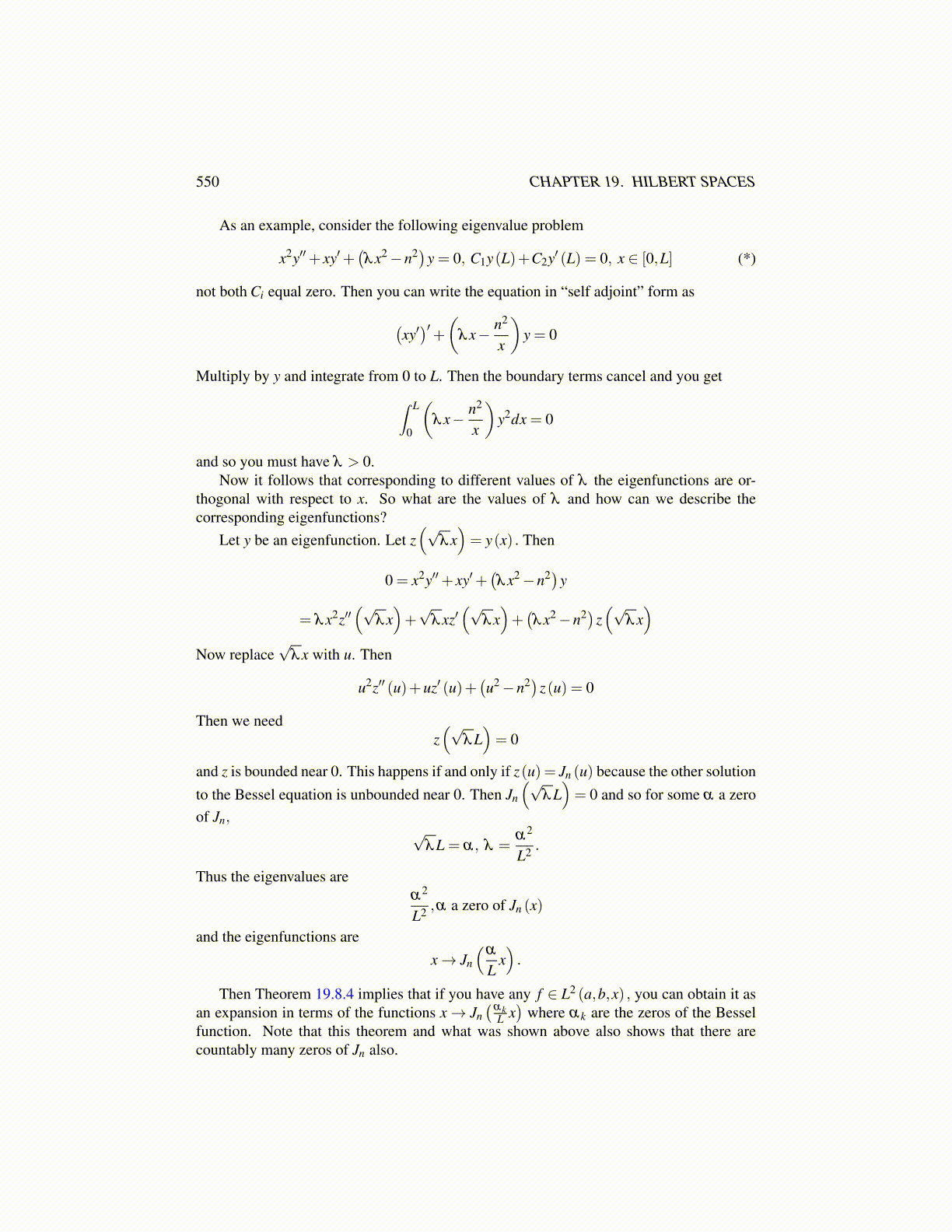
550 CHAPTER 19. HILBERT SPACES
As an example, consider the following eigenvalue problem
x2y′′+ xy′+(λx2−n2)y = 0, C1y(L)+C2y′ (L) = 0, x ∈ [0,L] (*)
not both Ci equal zero. Then you can write the equation in “self adjoint” form as
(xy′)′+
(λx− n2
x
)y = 0
Multiply by y and integrate from 0 to L. Then the boundary terms cancel and you get∫ L
0
(λx− n2
x
)y2dx = 0
and so you must have λ > 0.Now it follows that corresponding to different values of λ the eigenfunctions are or-
thogonal with respect to x. So what are the values of λ and how can we describe thecorresponding eigenfunctions?
Let y be an eigenfunction. Let z(√
λx)= y(x) . Then
0 = x2y′′+ xy′+(λx2−n2)y
= λx2z′′(√
λx)+√
λxz′(√
λx)+(λx2−n2)z
(√λx)
Now replace√
λx with u. Then
u2z′′ (u)+uz′ (u)+(u2−n2)z(u) = 0
Then we needz(√
λL)= 0
and z is bounded near 0. This happens if and only if z(u) = Jn (u) because the other solutionto the Bessel equation is unbounded near 0. Then Jn
(√λL)= 0 and so for some α a zero
of Jn,√
λL = α, λ =α2
L2 .
Thus the eigenvalues areα2
L2 ,α a zero of Jn (x)
and the eigenfunctions arex→ Jn
(α
Lx).
Then Theorem 19.8.4 implies that if you have any f ∈ L2 (a,b,x) , you can obtain it asan expansion in terms of the functions x→ Jn
(αkL x)
where αk are the zeros of the Besselfunction. Note that this theorem and what was shown above also shows that there arecountably many zeros of Jn also.